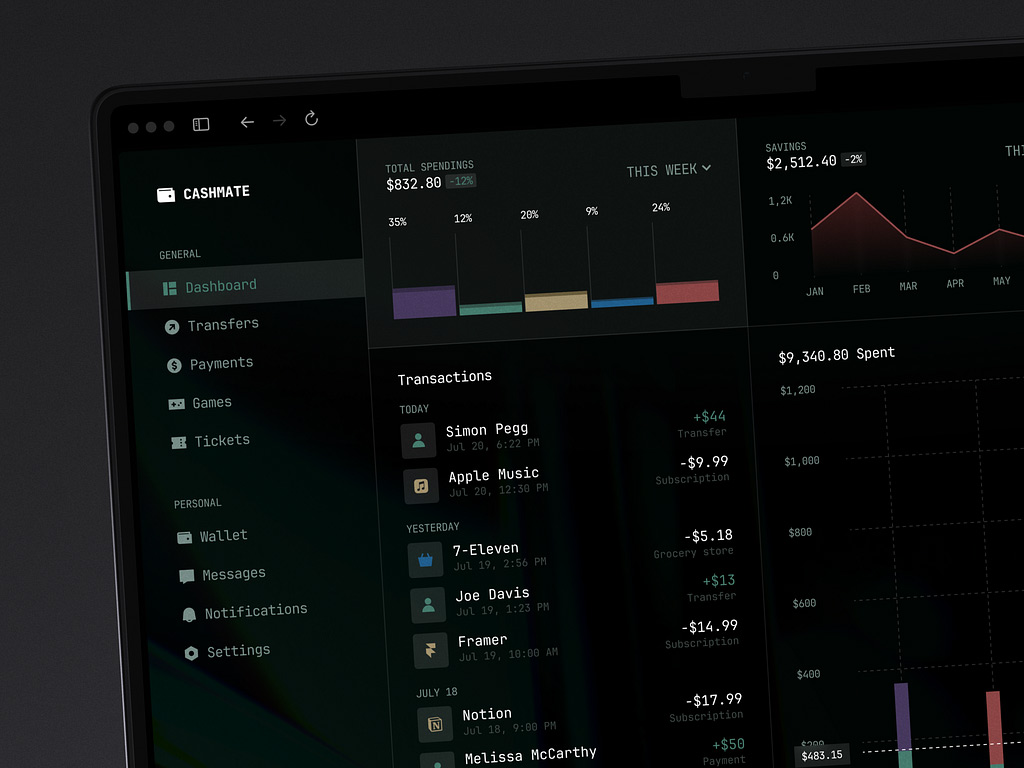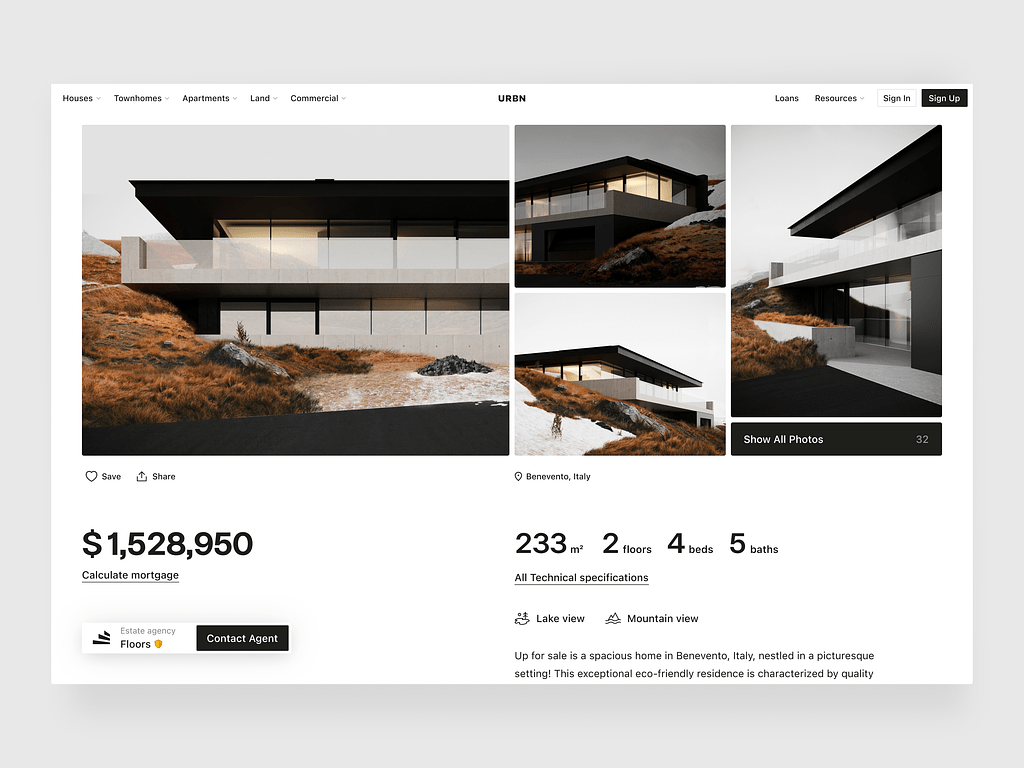Every developer faces these challenges when building their application for several platforms. Juggling different codebases, frameworks, and tools. Dealing with various compatibility issues and bugs. Is there any way to smooth this rocky path?
Contents:
In this article, we’ll uncover the top cross-platform frameworks that can save you time and energy, allowing you to build responsive applications for multiple platforms without the headache of learning several programming languages. Let’s dive in and discover how these powerful tools can help you unleash your creativity and become the developer you aspire to be.
What Are Cross-Platform Frameworks?
Starting with the basics—general questions. These are development tools designed to create applications that run on multiple operating systems and platforms with minimal code modification. So you write your code once and deploy it across various environments, such as iOS, Android, Windows, and web browsers, significantly reducing development time and effort.
At their core, these frameworks provide a unified set of functionalities and APIs, which means you don’t have to learn different languages or technologies for each platform. Instead, you can use a common codebase while still delivering a native-like experience to users on each platform.
Here are some benefits of using cross-platform app development tools:
- Reduced Development Time: By reusing code across platforms, you can decrease the time spent on writing, testing, and maintaining separate codebases.
- Cost Efficiency: If you have a small team, managing multiple platforms simultaneously can save your resources and costs.
- Consistent User Experience: Cross-platform frameworks often include design tools that help maintain a consistent look and feel across applications, enhancing user satisfaction.
- Faster Updates and Maintenance: With a single codebase, rolling out updates and bug fixes becomes quicker and easier, ensuring all platforms benefit from improvements simultaneously.
- Wider Reach: By deploying to multiple platforms with ease, you can target a broader audience, increasing the application’s potential user base.

Finance Management Web Dashboard by Conceptzilla
Top Cross-Platform Frameworks
React Native
React Native is a popular framework developed by Facebook that allows you to create mobile applications using JavaScript and React. With its help, you can build apps that work on multiple platforms, primarily iOS and Android while providing a near-native performance.
Pros:
- Cross-Platform App Development: Write once, run anywhere. You can share a significant amount of code between iOS and Android platforms, reducing development time and costs.
- Hot Reloading: You can see changes in real-time without rebuilding the app, enhancing productivity.
- Performance: React Native compiles into native code, which leads to better performance compared to other hybrid frameworks like Cordova.
- Strong Community and Ecosystem: A large community means a wealth of libraries, tools, and resources that can speed up development.
- Declarative UI: React Native allows for building user interfaces in a declarative approach, making code more predictable and easier to debug.
Cons:
- Performance Limitations: While performance is generally good, more complex apps, particularly those heavy in animations, may not perform as well as fully native apps.
- Native Modules Dependency: Certain functionalities may require writing custom native code, so you might need knowledge of native iOS/Android development.
- UI Consistency: While React Native allows for a shared codebase, achieving consistent UI across platforms leads to additional work, as styling can differ.
- Limited Native Functionality: Access to platform-specific functionalities often requires additional libraries or bridging native code, which can increase complexity.
Flutter
Flutter is an open-source toolkit created by Google, designed for cross-platform app development for mobile, web, and desktop from a single codebase. It uses the Dart programming language and is known for a rich set of customizable widgets, hot reload capabilities, and expressive UI.
Pros:
- Single Codebase: You maintain one codebase for both iOS and Android platforms, significantly reducing development time and costs.
- Hot Reload: Once changes are made in the code, you can instantly view them in the app, which speeds up the development process and improves productivity.
- Performance: Since Flutter compiles native ARM code and has its own rendering engine, it typically delivers high performance close to native apps.
- Rich Widget Library: Flutter offers a comprehensive set of built-in widgets that allow for crafting highly customizable UIs, tailored to meet specific design requirements.
- Strong Community and Growing Ecosystem: The cross-platform mobile app framework has a rapidly growing community and an extensive collection of plugins and packages that facilitate various functionalities.
Cons:
- Larger App Size: Flutter apps can be larger than their native counterparts due to the framework’s engine and libraries being bundled with them.
- Limited Third-Party Libraries: While Flutter’s ecosystem is growing, it may not yet have as many third-party libraries as more established frameworks like React Native.
- Learning Curve: Even though it’s similar to languages like Java and JavaScript, you may face challenges learning Dart.
- Web and Desktop Support Limitations: While Flutter supports web and desktop applications, these features are still evolving and may not be as robust as mobile support.

Real Estate Dashboard Design Concept by Conceptzilla
Xamarin
Xamarin is a Microsoft-owned framework that you can use to develop cross-platform apps with C# and the .NET framework. The target platforms are Android, iOS, and Windows with a shared codebase, providing access to device APIs and native UI components.
Pros:
- Shared Codebase: You can write a significant amount of shared code (up to 90% in some cases), which reduces development time and effort for multi-platform applications.
- Native Performance: Xamarin apps also compile into native code, leading to performance that is often comparable to native apps, with the ability to access native APIs and UI components.
- Strong Integration with Microsoft Ecosystem: Xamarin integrates seamlessly with Visual Studio, providing a robust IDE with extensive tools for debugging, testing, and deployment.
- Access to Native APIs: There are bindings to the native libraries of both iOS and Android, allowing you to utilize platform-specific features efficiently.
- Support for Desktop Applications: With Xamarin.Forms, you can create applications for Windows as well, extending their reach beyond mobile devices.
Cons:
- Larger App Size: Similar to Flutter, Xamarin applications typically have a larger footprint than native apps due to the underlying framework and runtime libraries.
- Learning Curve: While C# is a popular language, developers new to Xamarin may face challenges in mastering the framework, especially with its platform-specific nuances.
- Complexity with UI Architecture: While Xamarin.Forms simplifies UI development, creating custom or complex UIs requires knowledge of the underlying platform, increasing development complexity.
- Performance Overheads: Although Xamarin compiles native code, some performance overhead may occur compared to fully native applications, particularly in complex scenarios.
Node.js
Node.js is an open-source, server-side JavaScript runtime built on Chrome’s V8 engine, designed to create scalable network applications. You can develop cross-platform apps leveraging a non-blocking, event-driven architecture.
Pros:
- Single Language for Frontend and Backend: It’s possible to use JavaScript on both the client and server sides, promoting a unified development experience and streamlining the workflow.
- Asynchronous and Event-Driven: The non-blocking nature of Node.js enables handling multiple connections simultaneously, making it ideal for I/O-heavy applications like APIs and real-time apps.
- Rich Ecosystem and Package Management: The framework has a vast ecosystem available through npm (Node Package Manager), allowing you to add functionality quickly and easily.
- Microservices and Scalability: It works well with microservices architectures, so you can create lightweight, scalable applications that effectively handle growing workloads.
- Fast Performance: Due to the V8 engine’s efficient performance, Node.js is well-suited for high-speed data processing applications.
Cons:
- Callback Hell: The asynchronous nature of Node.js often leads to complex nested callbacks, making code hard to read and maintain. Promises and async/await patterns can help, but they add complexity.
- Single-Threaded Model: Node.js operates on a single thread, which causes performance bottlenecks in CPU-intensive tasks, as blocking operations will halt the entire event loop.
- Immature Ecosystem: While npm has a rich package collection, some packages may be poorly maintained or not well-documented, leading to potential issues in production.
- Difficult Debugging: The asynchronous code execution and event-driven model can complicate debugging, requiring additional tools or strategies to manage effectively.

Rental App Design Concept by Shakuro
NativeScript
NativeScript is a cross-platform mobile app framework running on JavaScript, TypeScript, or Angular. Leveraging this tool, you can build native mobile apps for iOS and Android using a single codebase while providing direct access to native APIs.
Pros:
- Native User Experience: NativeScript applications offer a truly native look and feel since they render UI components using the platform’s native controls. This approach results in smooth performance and better integration with device features.
- Single Codebase: Just like with other cross-platform frameworks, you can write code once and deploy it across both iOS and Android platforms. It reduces development time and cost.
- Access to Native APIs: You have direct access to native APIs and modules, that’s why you can leverage device capabilities without needing to write platform-specific code.
- Rich Ecosystem: The framework benefits from a growing ecosystem of plugins, allowing you to incorporate various libraries and tools easily.
- Flexibility with Frameworks: Developers can use Angular, Vue.js, or plain JavaScript to build applications, giving them the freedom to choose their preferred development style.
Cons:
- Learning Curve: While JavaScript is widely known, the specifics of the NativeScript framework, especially regarding the UI components and native APIs, can present a learning curve for beginners.
- Performance Overhead: Despite being closer to native, there can be some performance overhead compared to fully native applications, especially when dealing with complex animations or intensive calculations.
- Limited UI Components: Although the library is expanding, NativeScript may not have the extensive range of pre-built UI components available in more mature frameworks.
- Fragmentation of Plugins: The quality and maintenance of plugins can vary, and lesser-used or poorly maintained ones may cause issues during development.
- Smaller Community: Compared to older frameworks like React Native or Flutter, NativeScript has a smaller community, often limiting resources, tutorials, and community support.
Ionic
This is a powerful open-source framework for cross-platform app development using web technologies like HTML, CSS, and JavaScript. It primarily utilizes Angular, though it also supports React and Vue.js. With its help, you can create applications that run on iOS, Android, and the web from a single codebase.
Pros:
- Web Technologies: It is possible to use familiar web technologies (HTML, CSS, JavaScript), which lowers the barrier to entry for web developers looking to expand into mobile app development.
- Rich UI Components: Ionic comes with an extensive library of pre-designed UI components that are customizable and responsive.
- Strong Community and Ecosystem: Ionic has a large and active community, along with comprehensive documentation, tutorials, and a variety of plugins and extensions.
- Integration with Angular: It seamlessly integrates with Angular, as well as other popular frameworks like React and Vue.js, allowing you to leverage their existing knowledge.
Cons:
- Performance Limitations: Since Ionic apps are essentially web applications running in a WebView, they may not match the performance of fully native applications, especially for graphics-intensive or high-performance tasks.
- Dependency on WebView: The reliance on the WebView component can lead to inconsistencies in behavior and performance across different platforms and versions, particularly on older devices.
- Limited Access to Native Features: While Ionic provides many plugins for accessing native device features, it may not cover all native APIs or functionalities. You will have to do additional work to implement native code for more complex features.
- UI Consistency Challenges: Achieving a fully native look and feel can sometimes be challenging, as Ionic components may not perfectly mimic native components on each platform.
- Learning Curve for Advanced Features: If you are unfamiliar with Angular or its ecosystem, there will be a steeper learning curve associated with more advanced features and optimizations.

Crypto Exchange iWatch App by Conceptzilla
Kotlin Multiplatform
KMP is a cross-platform mobile app framework that allows developers to share code between mobile (iOS and Android), web, and other platforms while still enabling the use of platform-specific APIs and libraries. It is part of the Kotlin programming language ecosystem and leverages its features to foster code sharing and maintainability.
Pros:
- Code Sharing: You can write shared code (business logic, data models, etc.) once and use it across multiple platforms, reducing duplication and maintenance overhead.
- Native Performance: You deliver performance that is closer to native apps compared to other cross-platform frameworks that rely heavily on interpretation.
- Flexible Architecture: KMP enables a flexible architecture where critical components can be shared while still allowing the flexibility to implement platform-specific features or UI.
- Interoperable with Existing Code: It is fully interoperable with Java, allowing for easier integration with existing Android projects and libraries.
- Strong Type System: Kotlin’s strong type system helps catch errors at compile time, improving code reliability and reducing runtime issues.
Cons:
- Complexity in Setup: Setting up a Kotlin Multiplatform project can be more complex than some other cross-platform frameworks, especially if you are unfamiliar with KMP.
- Limited Library Support: While the library ecosystem is growing, it may not be as extensive as those of more established frameworks. Certain libraries used in native development may not yet have multiplatform support.
- Fragmented Adoption: As KMP is still relatively new, some teams hesitate to adopt it due to concerns about community support, documentation, or stability compared to more established frameworks.
- Need for Separate UI Development: KMP shares business logic code, but you still need to implement platform-specific UI code, leading to some duplication in the UI components for different platforms.

Choosing the Right Framework for App Development
It can be a challenging task, as there are many factors to consider when making your decision. Some essential factors to keep in mind when choosing the right framework for cross-platform app development are:
- Platform Support: Before choosing a tool, it is essential to determine the target platforms. If you are developing a mobile app, you will need to choose between developing for Android, iOS, or both. Some frameworks may offer support for both platforms, while others may have more extensive support for one platform over the other.
- Development Speed: It is another key factor to consider. The framework should offer the necessary tools and features that allow you to build the app fast. Some tools come with pre-built components and libraries designed to speed up the process.
- Learning Curve: You should ensure that the developers on your team are comfortable with the cross-platform framework and can contribute to the development process effectively.
- Community Support: Select a framework that has a large community of developers. This way, you will have the necessary resources and documentation at hand.
- Cost: Some frameworks are open-source and free to use, while others require a paid subscription. Make the choice depending on your budget.
- Performance: To develop cross-platform apps, you need optimal performance. You should select a framework that makes use of the device’s native features whenever possible.
- Scalability: Choose a framework that can scale with your project’s needs as the application grows and requires new features.
Conclusion
Selecting the best cross-platform app development framework is crucial for ensuring efficiency, performance, and a seamless user experience. Each brings distinct advantages and unique features tailored to different project needs.
As you embark on your development journey, keep these factors in mind to make an informed decision that aligns with your goals. With the right tool, you can streamline your development process, reduce time to market, and deliver exceptional products across multiple platforms.
Looking for a development team experienced in cross-platform development? Reach out to us and let’s create a versatile app to grow your business.
